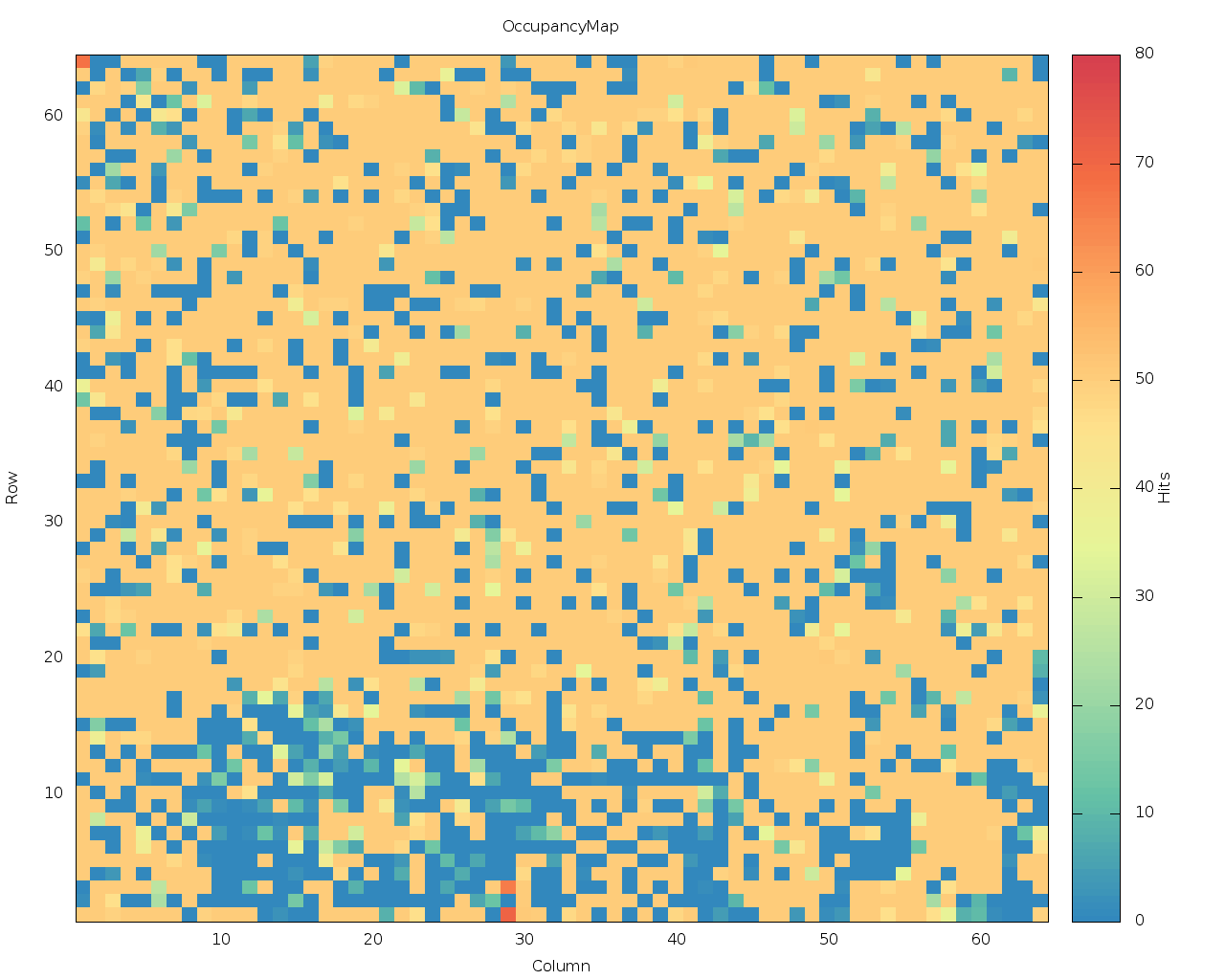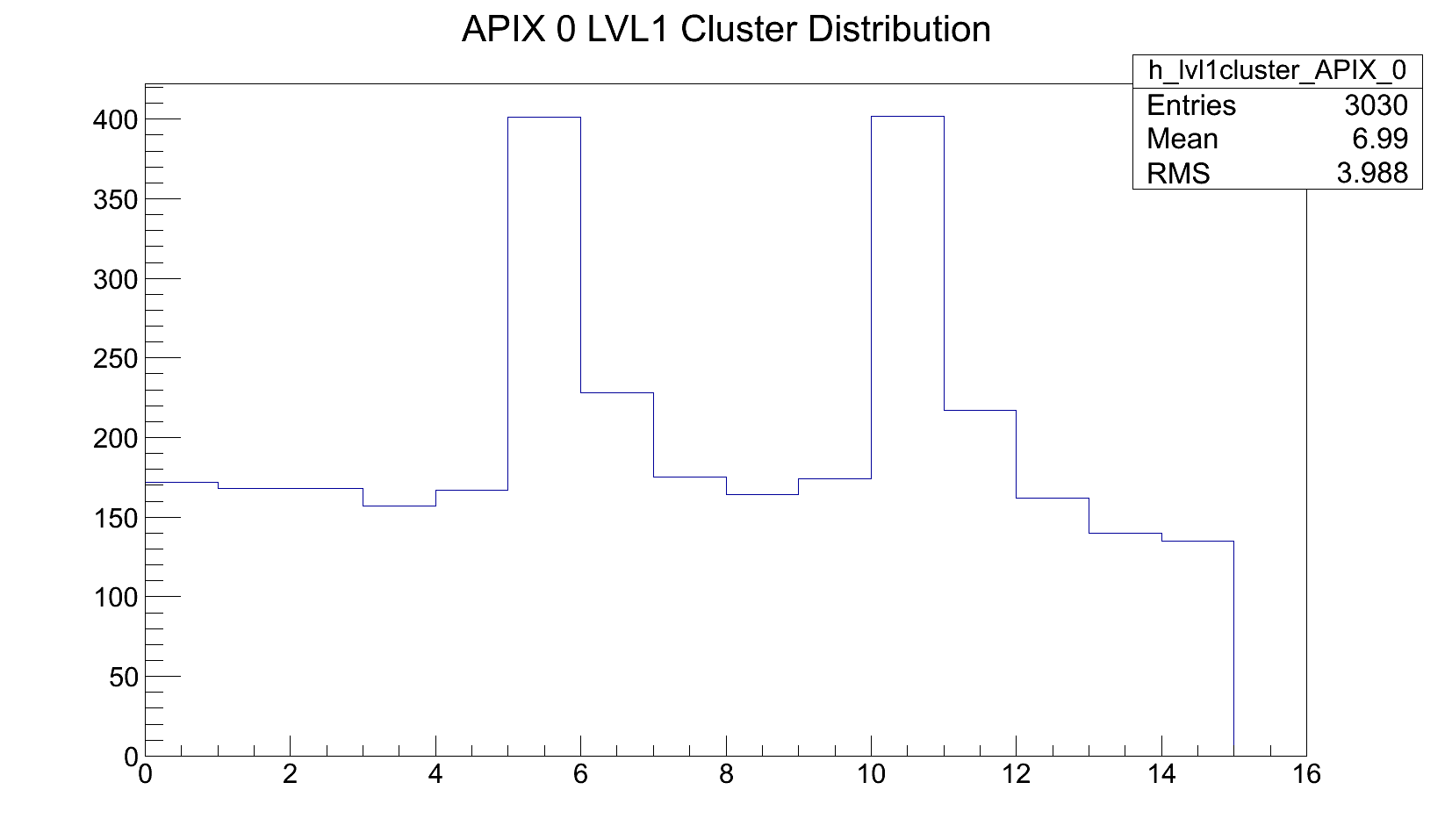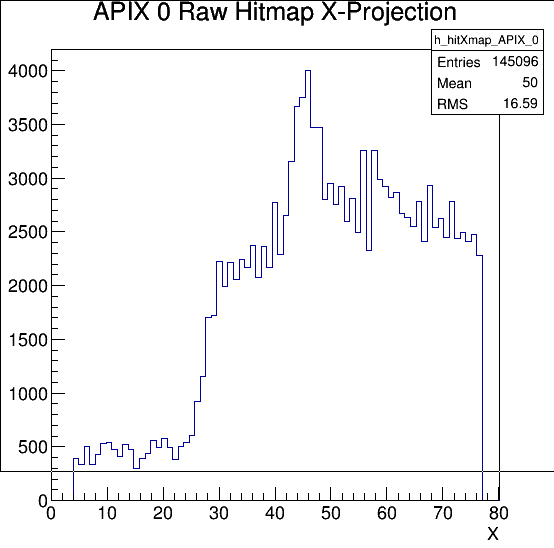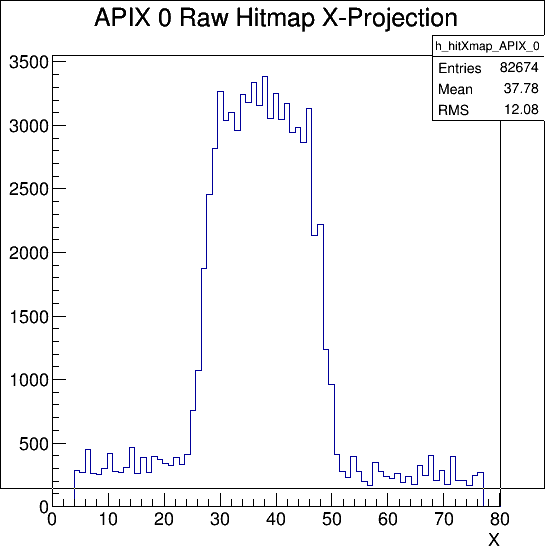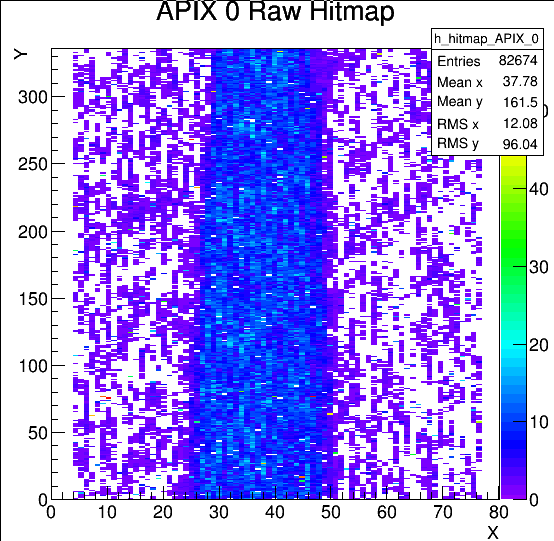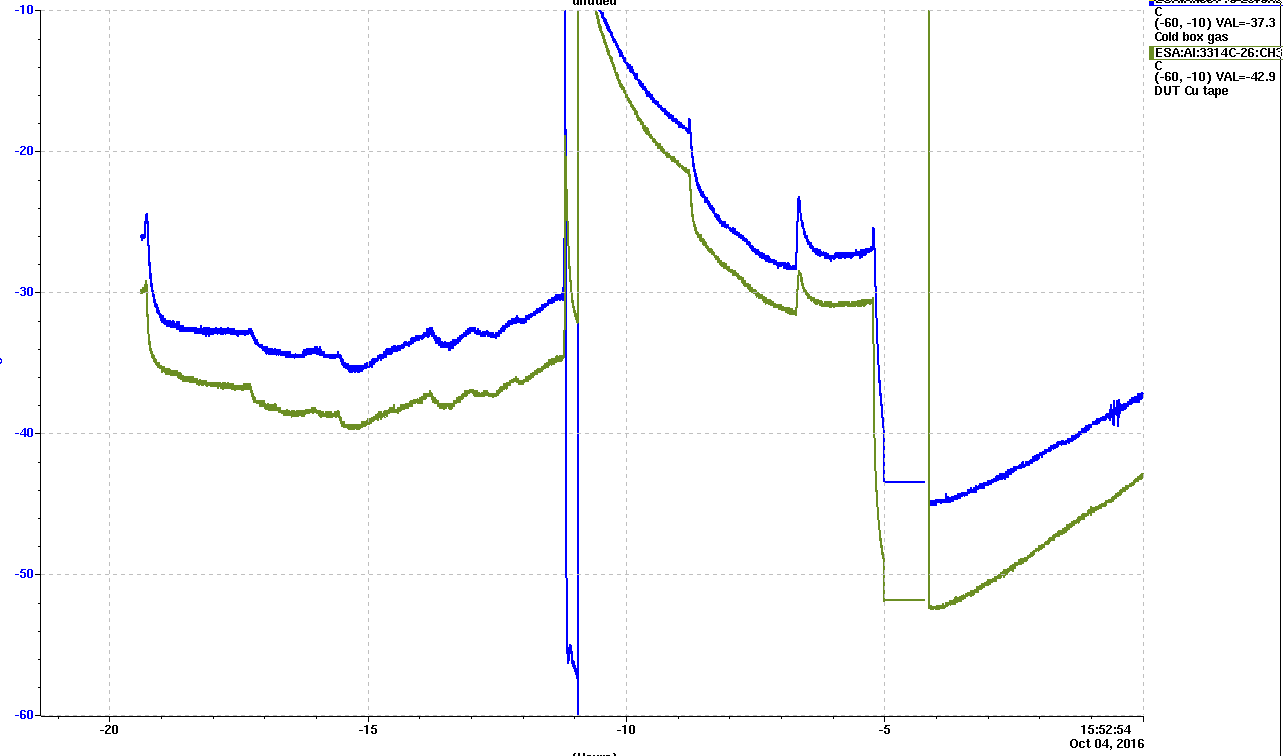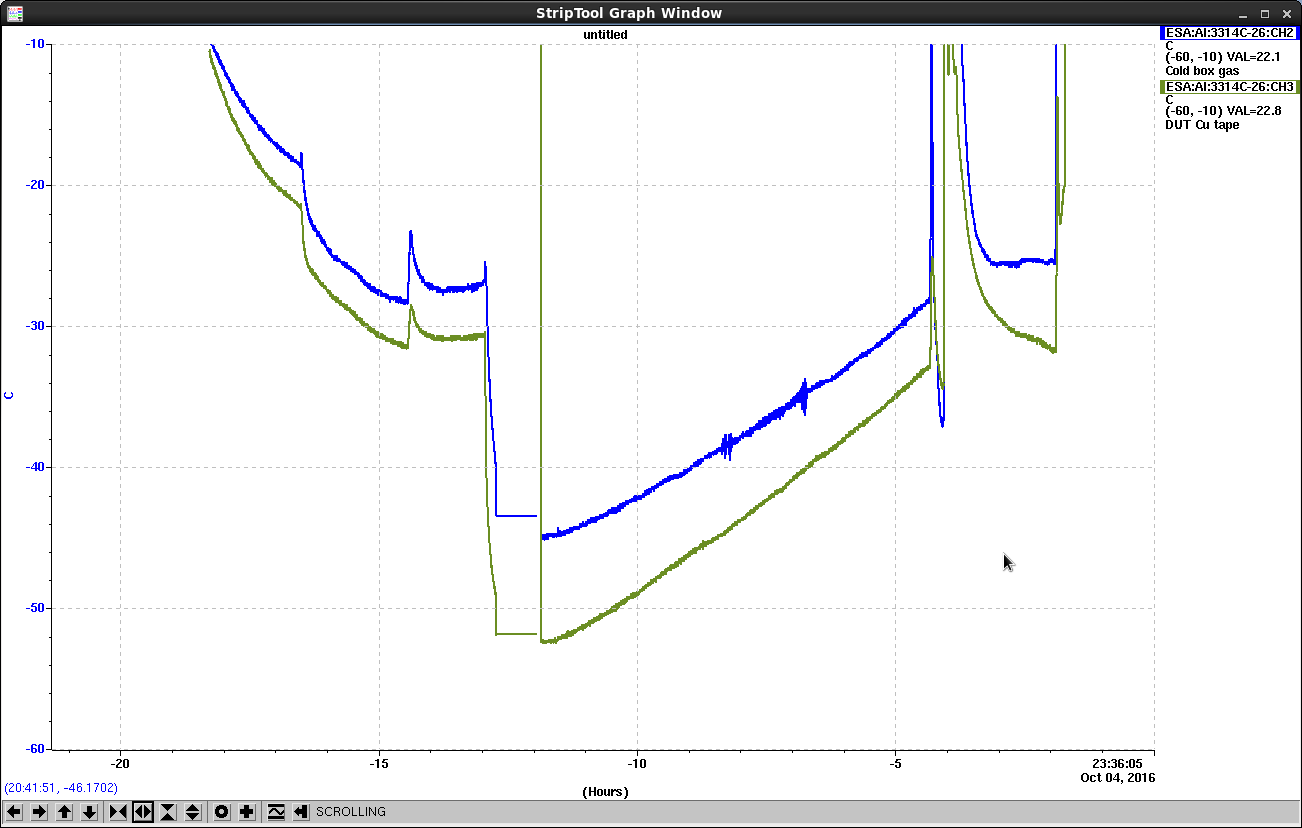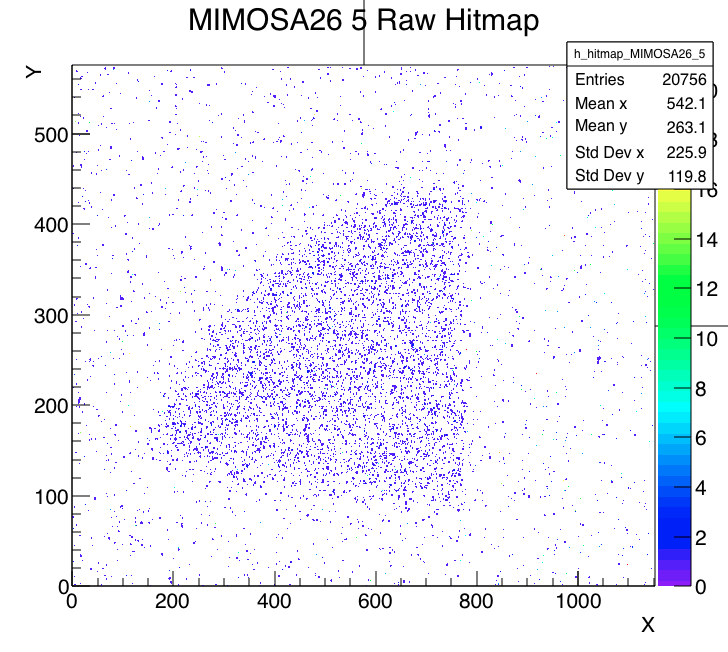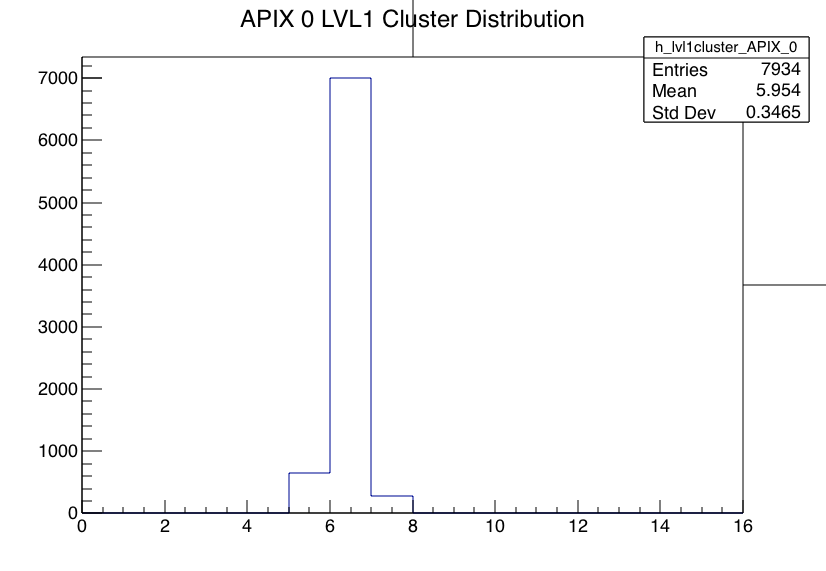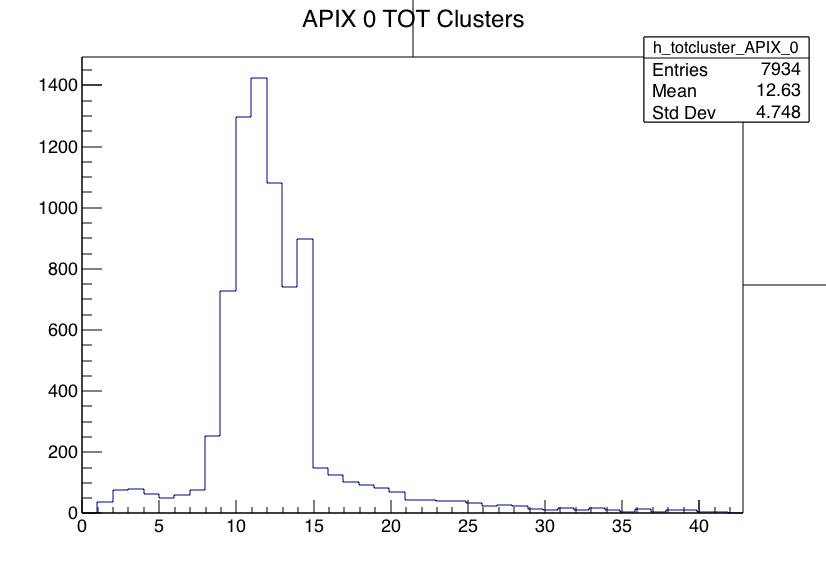...
LBNL: Katie Dunne, Timon Heim, Peilian Liu, Ben Nachman, Maurice Garcia Sciveres
SLAC: Nicole Hartman, Peter Kim, Martin Kocian, Rob Mina, Francesco Rubbo, Su Dong
ANL: Sergei Chekanov
KEK: Koji Nakamura
Shift Schedule
...
| Day | Shift | Shifter |
|---|---|---|
| Thursday Sep/29 | 9am – 9pm | Sergei, Su Dong, Timon, Ben, Katie |
| Thursday – Friday | 9pm – 9am | Peilian, Ben (->1am), Timon (->5am), Sergei (4am->) |
| Friday Sep/30 | 9am – 9pm | Su Dong, Nicole, Sergei (->11am) |
| Friday – Saturday | 9pm – 9am | Timon (->5am,10am->), Peilian, Rob (5am->) |
| Saturday Oct/1 | 9am – 9pm | Su Dong, Rob(->10am), Ben (10am->), Timon(10am-2pm) |
| Saturday – Sunday | 9pm – 9am | No shift, LCLS at low energy. Ben and Su Dong switching cold->warm setup |
| Sunday Oct/2 | 9am – 9pm | Ben, Peter, Katie |
| Sunday – Monday | 9pm – 9am | Su Dong, Nicole |
| Monday Oct/3 | 9am – 9pm | Francesco?/Martin?, Peter? |
| Monday – Tuesday | 9pm – 9am | Ben, Rob |
| Tuesday | 9am – 9pm | Su Dong, Peter, Rob |
| Wednesday | 10am-10pm | Martin, Su Dong, Timon (remote) |
Event Log
Sep/19-26 prep
...
- 09:30 FE65-P2: An analog scan looked pretty bad at first:
- 09:30 FE65-P2: ran tune_globalthreshold and tune_pixel threshold and got okay results from an analog scan:
- When running YARR we get an error for each scan: ERROR # virtual void Fe65p2DataProcessor :: process() : Received data for channel 1 but storage not initialized!
- 09:42 We have beam, are current calibrating LUB2 using config_rad_np_0_271
- 10:10 started run 649 with config SLAC_LUB2_with_FE65P2 and YARR producer; currently blasting us with 400 hits per plane TA = -35C TP = -43C; events wouldn't build so restarted RCE/Mimosa, etc.
- 11:03 stopped run
- 11:34 Run 650 TA = -31C TP = -43C Moved DUT back up 4mm to sit in area that avoids dead pixels. After running for about 1600 hits this was actually a worse position so repositioned back -4mm
- Apix is not showing as many hits as all other mimosa planes, even those behind the DUT. We tried using the previous config from yesterday, didn't improve things. For the July testbeam the LV was set to 1.5V with 0.33 and for this run we had 1.2V.
- 12:37 Considered RCE couldn't handle the high particle rate so we asked MCC to lower to ~20 electrons. Did not improve things. Requested an access so we could increase the LV to 1.4, top off the dry ice, and check to make sure we were still in the beam.
- 13:13 Run 656 The first run the telescope had about 300 hits per event while DUT had 4.5. After the access the telescope sees 21.5 and the DUT sees 1.9. The mimosa has different pixel size (2) so accounting for that the number of particles the telescope sees is 10 per pulse and the DUT (with cluster size 1) sees 1.9, so this ration is in the same order of magnitude. Pixel ToT distribution is lower than yesterday's
- 13:40 Tried retuning LUB2, did not improve ratio of hits per event of Mimosa/DUT - still about 11/3
- 15:00 Retuned Run 658 -> TOT still doesn't look great
- Configs:
- 349 thresholdscan 1000v
- 350 thresholdscan 600v
- 351 thresholdscan 400v
- 16:35 Access to monitor leakage current, turns out the HV current was at compliance. It was tripped at 400V, so all runs today were without HV operating. Changed the current limit and set up a camera to monitor HV and leakage current
16:50 started run 662 at 400V. Planning to run 10 minutes at a time in 200V increments
Run Comment 662 400V 20uA 663 600V 34 uA 667 800V 51uA 668 1000V 70uA - Runs 662-668 were very noisy RCE needs to be restarted almost everytime we start a new run
Tried running read_rawData script on some FE65-P2 data from earlier (run 649) that we scp'd to shieldtoad but program hangs
17:45 Retuning 1500e@800v -48C config: 392
Run Comment 669 800V 47uA - very low hits per event again. Looks like the tuning is masking lots of pixels because the noise has gone down.
Weird behavior could also be because the temperature is too low?
682-698 High rate area scan with ~80 hits/event perpendicular beam. HV=800V, ~200uA, rising with gas temperatures from -35C to -28C. Config=SLAC_1dut_rad_FEI4A (calib=335, Thr=1500e 8000e@10TOT). Stepping through windows of 7x3mm. See Twiki spread sheet for run details. 701-716 Low hit rate (~3 particles/event) efficiency scan for left column and more top regions. HV=800, current 250-380uA gas temperature -28C to -25C, with same configuration as above. 710-714 HV bias scan from 1.1KV down to 0.6V. Gas temperature -34C stable after dry ice top off. - The data taken with config-392 showed big unexpected holes. We examined the enable masks in that calibration and found that majority of the pixels are disabled and only some island of pixels are enabled. The block temperature is <-50C ! which is too difficult for calibration to work. When dug out the July perpendicular run config SLAC_1dut_rad_FE14A to run with that (only some pixels on the edges disabled), most pixel back to life again while the left and bottom of the DUT got some more noise hits which is expected from the too cold temperature.
- Requested access to warm up somewhat and take the opportunity to drop a 1.3" wide wood chip into the DUT box between the dry ice partition plate and DUT base block to prevent direct contact and let DUT to follow more the gas temperature and hopefully not following only gently the dry ice.
- Upon restart we got bogged down by DUT readout errors which was rather resilient to reboot HSIO. Went for access and lowered the LV 1.4V->1.3V which solved the problem nicely. So the lessons is that 1.4V is only workable at very low temperatures and was the cause of the many DUT readout errors. We know 1.2V worked nicely at room temperature so that one should not need to run above 1.3V. Retro (SD): This might be a red-herring. The more likely culprit was probably the LV powerup supply oscillation. Hold out LV plug until supply up and settled before pluggin-in might be might be the actual action that helped.
- Decided to go after a DUT scan at high rate to map out bad pixels first. Requested MCC to (fully) open slit10 to 10mm which gave ~80 pixel hits/event for the scan, during Run 682-698 with ~2000 each stepped over 7x3mm windows. A beam line magnet tripped briefly which took a way the beam for 15min. As temperature rising through these runs, the noise pixel gradually fading out.
- 2:00am recentered beam spot on the left hand vertical strip to take low particle rate fine quality efficiency data. Asked MCC to close down slit10 and looks like at 0.5mm one cannot see APIX LVL1 timing peak any more so we settled for slit10=1mm. The PIXEL hit rate for good MIMOSA planes is ~10 but when no beam this still reads ~3 which is the effective pedestal. Checking the APIX cluster LVL1 time peak size and overall DAQ plane count histogram one can derive the cluster rate/event = ~2000/650 ~ 3 which is almost perfect. Given the noise pixels around at at least the same rate, it doesn't make sense to go any lower. Offline reconstruction has to find a way to work with at least this rate.
- Low hit rate efficiency data collection on the left column start with run 701 at the bottom for 10K events per run and marching up 4mm each run.
- 4:15am Finished a full vertical stripe of low hit rate data. Decided to try varying bias. Gas temperature already at -25C and and leakage current 340uA. Making a quick HV step up, it was found that although the current was still <600uA at 1.0 KV initially, but it is not stable and continued to creep up even when we were not running. Decided to hold off bias scan until we top off the dry ice next time.
- Added two more low rate run on the top half towards the center.
- Leakage current up to >500uA. Requested access to top up dry ice. It was half empty and our top up didn't pack the full chamber to avoid going too cold.
- Upon restart, we got a lot of DUT readout errors choked the DAQ again. Had to ask for another access. This time only tried one simple thing: power down LV and unplug LV cable at PSU then power up PSU and wait until the ringing output settle before plug in the LV cable to PSU. This was sufficient to clear the problem. Many previous incidents are probably due to the same power up problem that simply did not bring up FE-I4 properly. This points to the importance to follow this LV power up ritual and check readout with a calibration in the pit before exit the access.
- The sensor leakage current dropped very quickly back to <100uA after dry ice top off. We decided to try again for the HV bias scan and this time leakage current did not run away even at 1.1KV. So we started the bias scan at 1.1KV in region (X=20-50,Y=220-280) from Run 710.
- 9:00 am: end of the perpendicular runs.
- 10:00 went in for an access to tilt the sensor. Some reference photos taken by Ben and SuDong. The thermocouple that was taped to the base metal is now somewhat loosely attached, hence the two thermocouple (one in the air; one on the metal) temperature readings are closer than before. Also added more ice.
- 10:40 am: Temp. measurement down to -24C and -27C. Started a new run and asked for the beam, but MCC tells us that due to MD there will be no beam until 3 PM. Somehow this information was not related to us until now. Sigh.
- 3:00 PM: MD is over, but it will take another 30 minutes before beam.
- 4:30 PM: Well, MD (apparently scheduled last Wed.) continues. Until 7 PM. In the meantime, they will give us beam whenever they can, though may not be continuous. Still useful for setting up the tilted sensor run configuration.
- 4:45 PM: Finally some pulses in the trigger! HV set to 800V; the current reading started at 260 uA and crept up to 294 uA in 5 minutes, then stabilized. Temp. readings are -31C and -35C. The current is down to 275 uA after another 10 minutes.
- Run 718 shows cluster hit streaks in the entire APIX hit map, so DUT appears to be in the central target area. We will keep the location as is for now. Config file = SLAC_LUB2_FE65P2 (335.cfg). Taking 2 runs of 12000 events each at 800V (Run 718, 720), 600V (Run 721, 722).
- In Run 723 we noticed that the beam pulse profile appeared to have a doubled feature. Also see the monitoring histograms in Run723. Called MCC. The double feature will come/go through the night. He at least said sorry.
| Known LCLS development for XC119 to have 2nd pulse 122ns later | Single pulse normally at =5. 5*25ns ~ 125ns. |
- Access to add more ice.
- 9:00 PM: Running now at 800 V with a 145 uA leakage current. Tried again to reduce the rate by moving S10 to 0.5 mm, but saw no particles on the DUT! Now to 2mm to verify that the DUT still exists. Don't want to upset the operators, will wait for shift change to go back to 1mm.
- 00:26: asked to increase slits from 1 to 2 mm. Particle count before was ~10 (but double peak, so ~5) and after is ~30 (still double peak, so ~15). We got this from looking at the cluster multiplicity in the 3rd telescope plane (basically no noise).
- 1:10: asked for the S10 slits to be moved out the whole way (100 mm) so that we can quickly scan the sensor.
- 2:35: LCLS beam down for a user (they didn't tell us...had to ask when we noticed no beam). They say they will 'give up in 30 min' and revert back if they can't get the configuration they want. Powered off the HV in order to preserve the temperature.
- 3:55: Asked to go back to the 2mm S10 spacing to take some final data with LUB2.
- 4:25: Call from ACR - lost beam because LCLS users want 30 Hz. No comment on when it would be back.
- 4:35: Asked for an access to swap LUB1 and LUB2 (might as well while we have no beam).
- Just swapped LUB1 and LUB2, LUB2 back in freezer. Ran digital and analog scans during access and looked okay out of the box using LUB2 config. The threshold was not so great, but that could just be the threshold. Will use the proper one now. Adam (MCC) said that LCLS user is back to 120 Hz, so we could have beam again soon (Adam is by himself tonight !!!)
- Temperature very warm (~-10), tried turning on HV but tripped the power supply. Turned off HV and now waiting for temperature to cool back to where it was before.
- 7:00: Went in for an access to add more ice (now out of ice) because the rate of temperature decrease is too slow (done at 9 am!)
- Access to examine HV and found the Bertan (orange) HV it tripping consistently at <300uA so we gave up that HV supply and switched to the green dumb HV supply.
- Threshold scan failed after 3rd mask stage, coupled to the abnormally low LV current (30mA). Went for access and found that threshold calibration only works with bias off and only after running the threshold calibration the LV current shows some normal value of ~300mA.
- Leakage current uncomfortably high at ~500uA while still only at 600V. The -25C temperature is just not sufficient for running. We took some scoop of dry ice out of the chamber and sprayed into the DUT box which did the trick to get temperature down right away. The leakage current is down to <100uA.
- Ramping up HV slowly while the Lv current is normal after a threshold scan is the only way to get both HV and LV up. When HV reaches ~770V, current suddenly goes crazy even when HV current is <100uA which trips off both HV and LV. So settled to HV=700V as the only way to run.
- Switch to configuration SLAC_LUB1_only (which points to LUB2 335 calibration).
- We can now run and seeing nice streak data but EPICS Caladium displays of temperature etc all dead. Panels for Caladium mover are all flashing error. Mike is out today and Doug came over to help. We rest the IOC but that didn't seem to do much. I recalled the similar incident before needed cycle Beckhoffs 26 power which we did that seemed to have brought things back but many setting appeared strange so that some guessed values were inserted and eventually got it to do something. We then found that driving fine stage Y up had sagging problem again which fortunately is just a matter of going to the fine Y motor advanced settings to enable the hold current and keep enable.
- Beam is ~150 particles/event. This was probably due to primary beam energy 11.49 GeV much closer to our secondary 11 GeV.
- Run 744 is a beam spot playing run with large number of events on a left vertical strip. We cannot go left any further Yfine stage reached bottom limit. After some fiddling we verified we are sitting just inside the tall vertical edge of the beam spot which is the tallest part in Y so that we have the widest streak street in the horizontal direction when viewing the APIX hit map (DUT is rotated).
- Run 745 started from right hand APIX edge map to scan for uniformity. We were moving Xfine stage during the run when reach target for a vertical strip. We stopped in the middle of the DUT when beam stopped.
| Run 745 accumulated 3 moves | Run 748 | Run 748 |
Run 746 continued, but we realized that the beam is back to single pulse ! and didn't last for long. We notice the histogram updates were slow and even implied a lower particle rate but looks like that was due to the online monitoring went into some jammed mode and not to respond to any clicking. Had to kill it and restart everything. Run 748 is good (4 mm away from hard stop).
- Beam goes on/off as MCC is playing between single and double pulses.
- We are ready for the low rate run. Asked MCC to turn down the rate. They dialled slit 10 to 0.5mm which initially just dropped everything but eventually managed to stay with that. The rate reads 20 pixels per event on Mimosa (single pulse mode) and APIX looks like 3-4 streaks per event, which looks just about right for us.
- Started low rate data from Run 750 on the left end (x=10-30) while beam is back to double pulse mode with varying relative strengths between the two pulses and sometimes is single pulse mode. Also there are occasional pauses as well. Gas temperature -38C, lleak=305uA. Run ended with 12K events.
- Started Run 751, -36C, Ileak=340uA. Moved Yfine up by 4mm but moved more like 8mm. This run covers X=(42 - 62). 12K events. The histogram save for this didn't work. I rushed starting next run before this was complete ?
- Started Run 752, -34C, Ileak=380uA. Move Yfine back -4mm to recover the last strip X=(30 - 50). 12K events.
- 17:20 MCC called asking to taking beam to full 120Hz to primary expt briefly. Ended run 752 with ~5K events. Missing saving histogram.
- 17:26 They returned faster than I thought. Run 753 continue with same setup as last run. End with 7.5K events.
- 17:52 Run 754: Yfine +4mm back to X=42-62 strip again. Ended wtih 9K events.
- 18:26 Run 755: Yfine +4mm to the final strip X>60. Ileak=480uA. Tgas=-31C.
- Access to swap in LUB2 since it looks like the LUB2 runs missed beam spot. Took out the wood chip to get block in contact to dry ice partition and sprayed some dry ice from chamber to DUT chamber. Moved HV control back to Bertan remote control. DUT box Xfine shifted x+28mm to compensate for the removed wood chip. Whole Caladium dropped 2mm to allow beam seeing full DUT height.
- Operator told me no more beam after 9pm. LCLS going to low E. There might be chance for intermitant beam tomorrow afternoon.
- 20:50 Gas temperature is dropping very slowly and only reached -26C. Can get HV to 600V but ran out of time to locate beam spot and they are changing beam energy already at 8:55pm. Looks like this is it for the cold run. Out of beam and out of dry ice.
- No beam until at least tomorrow afternoon.
- Access to dismount the cooling box and putting LUB2 back to the freezer in ESA. DUT rotational stage back on with RTISC4A mounted for possible more beam session. LV=2.0V and fully powered current=0.3A. HV=-80V (reading -86V) and bias current = 1.6mV = 0.16uA. Created a new module type RTISC4A using Seigei's script duplicate.sh to copy from fei4bexample. Threshold calibration from the clone shows large noise and large threshold dispersion. A quick attempt of tuning with fasttune-3000e-10Tot16ke-noisemask.pl got stuck with `subsription disconnected'. Leave this to Martin.
Oct/4
- 8am MCC meeting got a tentative agreement to potentially let us in sporadically during MD in the afternoon (1-7pm) but no guarantee.
- The apparent low efficiency of the RTI module from early data taking is explained by the fact the 225 calibration used at the time disabled very large fraction of the pixels.
- Martin calibrated RTISC2B in the lab perfectly fine with 140e noise, but setting up on the DUT platform also saw large noise. Changing LV supply and HV supply to Keithley, connecting ground wire etc all had positive or negative variations but inconclusive. The biggest effect was actually tuning off the Yfine stage holding current which we kept off and reached a setup that gave noise at 200e and narrow threshold spread at tuning (but broadened some later). RTISC2B was installed on the DUT stage [but we thought that was RTISC4A at the time so that cali directory and run config files were mislabeled as 4A]. This calibration (555) is now the RTISC4A default config. Several row at the bottom and top and edge columns have some problems but most pixel away from the edges are looking fine, with just a few problematic central pixels. Another curious effect is for noise scans, one most of times have two large blocks of rows showing bad noise on every pixel in the block for a probability of ~few x10**-5. Updated HSIO2 firmware didn't change much, but after updating the HSIO2 software, this problem was no longer reproducible.The top block always start from row 256. Since this is a low frequency effect, the setup is good enough for efficiency tests.
- In preparation for the beam run with all components, Timon updated YARR to readout 10 clock ticks to cover the double pulse events.
- While trying to test an auto-trig configuration with Caladium+RTI+FE65P2 together, the YARR server esadutlbnl1 seemed to have stuck and not responding to pings. Had to go down the pit to power cycle. Moved its power line to the first channel of the remote controlled poser strip. However, it looks like this may not help much as the PC still needs to hit a manual botton at front to start. It is back up in any case but we lost the one open window connecting to it. Also noticed from the open side panel of esadutlbnl1 that a fan on the top left corner is not spinning.
- 5pm: BEAM coming. Particle rate very low due to 15.3 GeV primary with 0.5mm slit10. Opened to 1mm. Quickly moved DUT to be in the beam spot. ~2 particles per crossing on DUT.
- Timon reprogramming YARR FPGA.
- 17:25 Started Run 763 Caladium + RTISC2B. ~2 particles/event. Telescope beam spot in the lower X half with tallest edge in the middle of MIMOSA. RTI DUT hit region X=45-70, Y=180-280. Ended at 17.59 after 10K events. Really nice clean DUT data with the new config cleaned up noise.
- Restarted Run control to brining in FE65P2 producer and moved telescope by -2mm in X to make the MIMOSA beam spot centered in X which is also the center of FE65P2. Last MIMOSA plane has a slightly low Y spot from the center which may be just fine for FE65P2. Telescope (an FE65P2 with it) will be kept here while we scan around DUT regions.
- 18:10 Run 764 with centered EUDET+FE65P2. DUT Xfine cancelled telescope X move to stay at the same local area as Run 764. MCC took away beam for 10min for primary user. Ended Run 18:21 for 2K events.
- 18:25 started Run 765 with DUT Xfine moved -7mm to center X=15-45. Beam taken away for 10min again for primary user after 10min. Ended run for 2K events.
- 18:48 Run 766, primary energy 15.3->13.5 GeV with 30% higher rate. Ended at 18:58 with 3.1K events for short beam off.
19:03 Run 767, Xfine -3.5mm so that we are at X=0-30 now. Ended at 17:45 with 11K events.
Run 767 RTISC2B (APIX 0) hit x correlation with MIMOSA plane 2 Run 767 RTISC2B hit y correlation with MIMOSA plane 2 - FE65P2 data empty. Dropped its producer to let Timon investigate in parallel.
- 20:05 After a few false start, got SLAC_1dut_FEI4B_RTISC4A setup up without FE65P2, but beam temporarily off. Down for at least 15-20min. DUT Yfine down by3mm to aim for top left corner.
- Asked for access to check FE65P2 HV,LV and module. All seemed to be up. Just pinched the partially blocked FE65P2 module connector which was slightly loose. Timon believes dataflow was OK with module standlaone operation and just without hits. maybe a calibration fixed it. Everything rounded in to the SLAC_1dut_FEI4B_RTISC4A_YARRParasitic configuration [note we mislabeled the config as for RTISC4A but it is really RTISC2B running].
- 21:05 Beam back. Start Run 775. FE65P2 hits now seen ! Only have 10min left. Ended run for ~2K events. Go for high rate for the last 10min.
- Moved Yfine up by 8mm to hit lower part of RTI.
- 21:30 Run 776 opened slit10 to 4mm with particle rate up to ~16/event. We are moving DUT stage during run without stopping for a quick spray of hits everywhere for local cluster analyses only.
21:50 Ended Run 776 with 5K events.
Run start events RTI DUT beam spot DUT clus/evt Notes 763 17:25 10K X=45-70; Y=180-280 1.7 RTISC2B only, MIMOSA beam spot on left half 764 18:10 2K X=45-70; Y=180-280 1.7 FE65P2 joined, but empty. Telescope moved to center beam spot. 765 18:25 2K X=15-45; Y=180-280 1.7 DUT Xfine -7mm 766 18:48 3K X=15-45; Y=180-280 3.1 Primary beam energy 15.3->13.5 767 19:03 11K X= 0-30; Y=180-280 3.3 DUT Xfine -3.5mm 775 21:05 2K X= 0-30; Y=230-330 3.3 FE65P2 hits back after scan. Yfine -~3mm to aim for top left corner 776 21:30 5K Moved all over 16 DUT stage moved RTI module during run. Run 776 hit spray at high rate while DUT stage was moved many times during the run without stop to cover wide range of regions, especially those not in the previous runs. The beam spot location at last MIMOSA plane (5) is essentially unchanged for all the runs today and should also be centered to FE65P2 mounted just behind it. Note the remarkable cleanness of the RTI APIX with essentially no noise hits. - This is the end of data taking for this test beam session.
Oct/12
The original event log for Oct/4 mislabelled the running RTI module as RTISC4A and even using the calibration directory and Run control config files names as RTISC4A but the actual module was RTISC2B. The notes in the Oct/4 event log were retroactively corrected.
